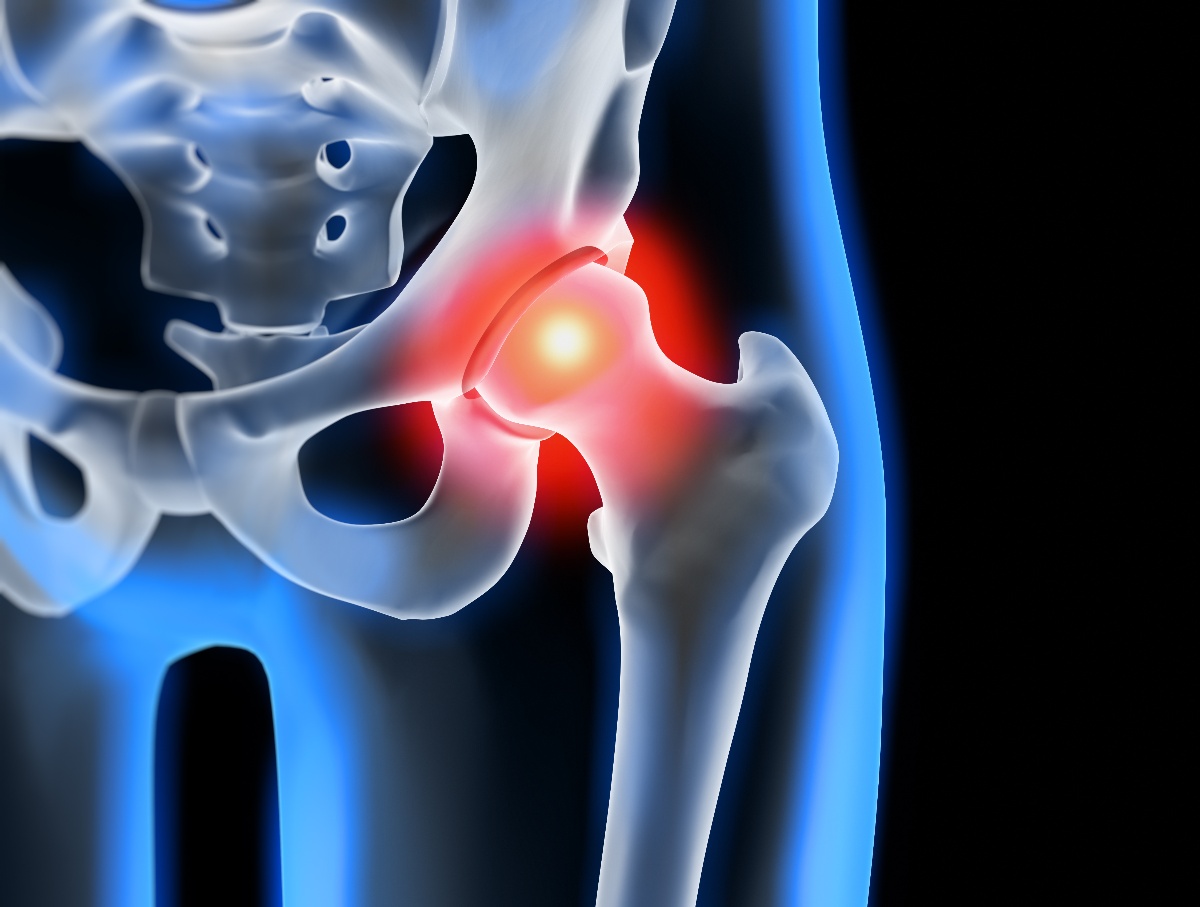Although we all experience aches and pains occasionally, chronic hip pain can be more than just an annoyance. Chronic hip pain presents itself in many ways, including hip stiffness and pain, groin pain, difficulty sleeping due to hip pain, and hip discomfort while bending, walking, or moving during your daily routine.
Hip pain can be caused by a fall or any number of conditions such as an overuse injury, bursitis, arthritis, tendonitis, or a problem with the iliotibial (IT) band. The iliotibial band is a band of tissue which connects your pelvis to the shin bone.
Exercise Injuries
Sometimes, strenuous exercise such as running or other high-impact sports can cause nagging hip pain. A sudden increase in the frequency or intensity of exercise may also cause an injury or hip pain. Hip injuries may be due to repetitive movements, or an imbalance in the muscles that places a lot of stress on a muscle group or tendon.
Hip Instability
Hip instability is a condition in which the hip joint becomes unstable due to a variety of causes. Hip instability can be either chronic or traumatic, depending on the cause of the condition.
Chronic instability usually results from a congenital condition, meaning that a person may be born with structural hip abnormalities. Traumatic instability ranges from severe hip dislocation to the hip joint sliding out of place. Traumatic hip instability usually results from motor vehicle accidents or intense athletic activities. Treatment for this condition depends on the cause and severity of hip instability.
Osteoarthritis
Osteoarthritis or OA is also referred to as wear-and-tear arthritis. OA is a condition that affects many people. Although osteoarthritis can occur in any joint in the body, it most often develops in weight-bearing joints, such as the knees and hips.
If you have hip osteoarthritis, you may experience pain, stiffness, and loss of movement. Bony overgrowths called bone spurs may also form. With hip osteoarthritis, you might have pain in your groin area and the front of the thigh.
Tendonitis
Hip tendonitis is an inflammation of the tendons, which are the thick cords attaching muscle to the hip bone. Tendonitis is often related to overuse, especially if you are a runner or do other high-impact exercises. Tendonitis may improve with rest and ice, although more severe injuries might require physical therapy (PT) or other treatments.
Bursitis
Hip bursitis is common in older adults. In addition, post-menopausal women are also at greater risk of hip bursitis. Bursitis is an inflammation of the bursae, which are small jelly-like sacs located throughout the body, including the shoulder, hip, and knee. These sacs contain fluid which helps cushion the joints and reduce friction.
Conservative Treatments
Many people find relief from hip pain by making changes to their exercise and sleep routines, in addition to making minor lifestyle changes. If lifestyle modifications do not work, over-the-counter pain management relief medications might be an option.
Resting, icing, and elevating your legs may also ease your hip pain if the injury is minor. Other pain management tips include:
- Avoid repetitive activities that put a strain on your hips
- If you are overweight or obese, lose weight
- Increase strength and flexibility by exercising regularly
- Always wear supportive footwear
- If your mattress is more than eight years old, replace it. Old mattresses are not supportive to your back and hips.
When You Should See Your Doctor
Sometimes hip pain can be a sign of something more serious than an overuse injury or strenuous exercise. If you experience any of the following signs, contact your doctor or health care provider as soon as possible:
- You have fallen or been involved in an accident
- Your hip pain has lasted for more than a week
- One of your joints appears to be deformed
- You are unable to move your leg or hip
- You cannot put weight on the affected leg without severe pain
- You experience intense pain or sudden swelling
- You have signs of an infection such as fever, chills, or sudden redness and inflammation
Remember, some hip discomfort is normal as you age. However, severe hip pain that affects your ability to move and enjoy your daily activities is a sign that it’s time to see your doctor. Taking control of your hip pain is important. Contact us to schedule a free consultation and learn more about non-surgical treatment options that can help you enjoy an active life.






